When I point out the various downsides of electric cars I am often accused of “hating” electric cars. Which I do – but that is beside the point. I freely admit my loathing for them – but that is neither here nor there as regards their downsides, which I report because that’s my job. I also report their up-sides, leaving it to the reader to decide whether these outweigh the downsides.
Similarly, fuel injection (especially the latest iteration, direct injection) vs. carburation, which can be better described as electronic vs. mechanical fuel delivery. There are up-and-downsides to both – which is now technically three as direct injection (the latest iteration of fuel injection) is much more than just electronic fuel delivery. It is neither hating nor loving any of them to point out their pros and cons.
But it’s stupid to ignore them. So let’s have a look at them!
First, a little history:
The first cars – and almost all cars made from the early 1900s through the early-mid 1980s – came with mechanical fuel delivery systems called carburetors. These devices metered fuel to the engine in response to the engine’s vacuum signal. Gasoline was sucked into the engine – through small orifices called jets, which determined how much fuel could flow into the engine. 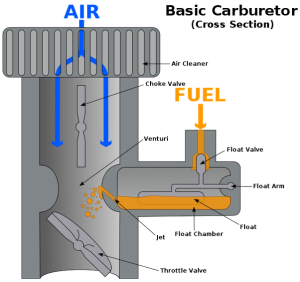
Modern electronic fuel delivery began to replace mechanical carburetors in the mid-late 1980s. These early EFI systems delivered fuel under pressure, via injectors, which in the early systems were mounted on top of the intake manifold, the same place carburetors were usually mounted.
The chief difference was that rather than liquid fuel bing drawn into the manifold by the engine’s vacuum, an injector (or two) sprayed it into the manifold under pressure. This was throttle body injection – TBI. It did a better job of atomizing the fuel, which made better use of the fuel. The system could also automatically adjust the air-fuel ratio to meet different conditions, including altitude changes. TBI-equipped cars started faster, got better gas mileage and produced lower emissions. 
Eventually, each of the engine’s cylinders got its own injector – mounted just above the intake valve – and the manifold only flowed air. This is port fuel injection (PFI) and it has been the typical set-up since the mid-late 1990s through now.
The latest iteration of fuel injection is direct injection (DI). This system moves the injector’s location such that it sprays the fuel directly into each cylinder and under much higher pressure. It is becoming the dominant form of injection in new cars.
Now for the upsides – and the downsides.
Carburetors –
The chief upside to mechanical fuel delivery is the absence of electronic controls (excepting a few early-mid ‘80s transitional-hybridized carburetors that had crude electronics grafted onto them). This means only mechanical knowledge (and tools) are needed to service/adjust a carburetor. You can see and touch all the workings, which makes it easier to figure out what may need fixing. 
They are also mechanically adjustable – and rebuildable.
Most common carburetors such as Holley and Rochester and Carter carburetors can be brought back to functionally as-new condition for less than $100 in parts and replaced with a brand-new unit (if necessary) for about $400.
The chief downside to mechanical fuel delivery is the absence of electronic/automatic adjustability. A carburetor cannot adjust itself (the air-fuel ratio) for varying driving conditions; it is mechanically “set” for general conditions. It can be manually adjusted for different/specific conditions – but you have to do it. And you can’t do it without raising the hood. Carbs also need more frequent adjustment – and if you don’t know how to do it, you will have to pay someone else to do it.
EFI –
The chief upside to electronic fuel delivery is self-adjustability. Or rather, the elimination of the need for you to make any adjustments. Ever. The electronics take care of fine-tuning the air-fuel ratio. Also – generally – better drivability (e.g., faster cold starts; no “warm up” waits; smoother throttle response) and higher gas mileage due to the system’s superior efficiency.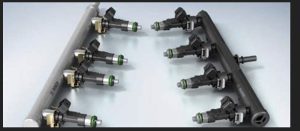
The chief downside of EFI is that it’s electronic.
Computers and sensors; lots of peripheral parts that carbureted systems haven’t got. That means more to diagnose – and deal with. Also, when these electronic parts stop working, they usually have to be replaced because they cannot be rebuilt. The parts can sometimes be very expensive (especially if it’s the computer/ECU that croaks) and the repair itself difficult. For example, replacing a fuel pump in a car equipped with EFI sometimes requires dropping the gas tank, in order to get to the pump.
In a carbureted car, the pump is mechanical and hangs off the engine, usually held in place by two bolts.
DI –
This system provides a power/mileage boost over EFI via extremely fine-tuning of the fuel-spray at much higher pressures (several thousand pounds vs. the 35-40 pounds that’s typical of EFI systems). The benefit here is chiefly for the vehicle manufacturer, in terms of achieving compliance with government fuel economy and emissions regulations.
The downsides of DI include increased complexity/cost and susceptibility to carbon fouling of the intake valves caused by the lack of gasoline (a solvent as well as a fuel) washing over the intake valves, as in both EFI and carbureted systems. Unless the system has a separate PFI circuit added (as many do) to wash down the intake valves.
The downside here being two fuel systems for one engine.
Summary:
If you want the simplest, most economical and DIY-friendly fuel delivery system, a carburetor is it, hands down. But you’ll need to be willing (and able) to lay hands on it, when it needs it. And you’ve got to be willing to drive a very old car, since no cars have had mechanical fuel delivery installed when they were new since about 30 years ago.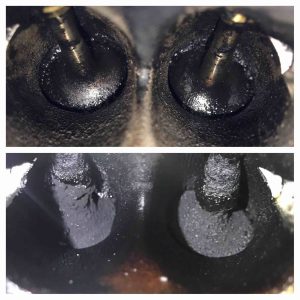
EFI – especially the early throttle body type with one or two injectors mounted on a wet-flow intake (just like a carburetor) is a great compromise between the stand-alone mechanical simplicity/low-cost of the carburetor and the increased complexity/DIY-unfriendliness of PFI.
You can easily upgrade a car that originally had a carburetor with an aftermarket TBI system and enjoy all the advantages of electronic fuel delivery at a cost that’s not too steep, too.
You don’t want DI – unless you’re not wanting to keep the car it’s installed on for much longer than the warranty it comes with lasts.
Unfortunately, this encompasses almost all brand-new cars.
. . .
Got a question about cars, bikes or anything else? Click on the “ask Eric” link and send ’em in! Or email me at [email protected] if the @!** “ask Eric” button doesn’t work!
If you like what you’ve found here please consider supporting EPautos.
We depend on you to keep the wheels turning!
Our donate button is here.
If you prefer not to use PayPal, our mailing address is:
EPautos
721 Hummingbird Lane SE
Copper Hill, VA 24079
PS: Get an EPautos magnet or sticker or coaster in return for a $20 or more one-time donation or a $10 or more monthly recurring donation. (Please be sure to tell us you want a magnet or sticker or coaster – and also, provide an address, so we know where to mail the thing!)
My eBook about car buying (new and used) is also available for your favorite price – free! Click here. If that fails, email me at [email protected] and I will send you a copy directly!


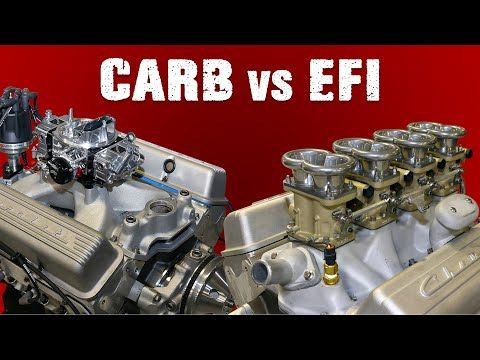








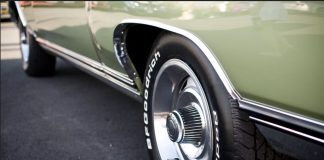
Direct injection intake fouling issue cure….
this process will steam-clean the engine
15 Water Methanol Injection Pros and Cons
https://greengarageblog.org/15-water-methanol-injection-pros-and-cons
Actually direct injection was the first form, look at diesels like Mercedes from the 40’s and up (or gas 220s from the 60’s) or Detroit diesels from the 30’s.
Another big benefit of injection over carbs is the rich conditions which washed lube oil off cylinders and into the crankcase leading to “good old days” 40000 mile life expectancy on an engine.
Carbs do have a place and I appreciate them, especially variable Venturi stuff like SU and Mikuni and Bing.
The only real reason injection is complicated is proprietary systems. Opens systems like Megasquirt are the cat’s ass and do amazing things for performance.
True, Ernie –
But… no moan as the secondaries flop open!
I have to admit, that is part of the experience. Maybe there is a market for a moan simulator…
There has to be a sick joke in there somewhere…
yes but…..
Another big benefit of injection over carbs is the rich conditions which washed lube oil off cylinders and into the crankcase leading to “good old days” 40000 mile life expectancy on an engine.
Rebuilt carbs properly jetted and functioning properly don’t do this and there is no pressure in the fuel system after shut down to flood the crankcase, fuel injection is far worse, there is pressure maintained in the fuel system after shut down, this is very dangerous. carbs are better.
Lots of injection systems have a fuel pressure regulator and a fuel damper, these have a rubber diaphragm in them usually, hooked up to a vacuum hose to the intake manifold, so when the rubber diaphragm wears out/fails, the vacuum hose sucks fuel into the intake manifold, this is ok if the engine is running, the problem is when the engine is shut down, the fuel system keeps maybe 40 lb pressure in the fuel rail to help start up.
When you shut down the engine fuel is pushed through the defective diaphragm and into the vacuum hose into the intake and into the combustion chamber, now you get oil dilution which causes main bearing failure.
Go and check your fuel pressure regulator and a fuel damper right now……
Lots of engines have had this issue.
Fuel dropping out of the mixture and puddling in the manifold is inherent to carb’ed systems, and even tbi systems. Proper tuning and good seals and gaskets help but never eliminate these problems. Yes EFI systems have a fpr which can go bad and leak or flood the engine. They run so poorly when that happens we fix them ASAP. Just like a heavy float, sticking needle valve, or sticking float. Variable venturi systems do a better job than most carbs including better altitude compensation. But EFI is better.
No pressure in the system like FI, carburetors can’t force gas down into the sump when the engine is turned off when the fuel pressure regulator or fuel damper diaphragm fail, carburetors are better. …….
.They run so poorly when that happens………I have seen them and they were running not quite right and/or required more cranking to start, the problem is people ignore problems as long as the car runs, then the main bearings go.
Kia had this problem with their direct injection, so did honda, the stupid direct injection injectors were leaking fuel down into the sump, then main bearing failure……direct injection is worse, just get a carburated car……
I vote for EFI, but only the throttle body or port style, NOT direct injected.
From my perspective, I change vehicles often, so there is practically a zero chance I will have issues EFI, and I haven’t.
Now for dirt bikes or ATV’s I still love EFI. I own both carb’d and EFI bikes. I like the EFI bikes a lot better. Yes they have a computer, injector and fuel pump. When I got my first EFI bike in 2012 I was a little nervous because we can be very remote at times with not a lot of assistance avail. if ya have trouble. So I bought spares and that bike just got sold after 10 years with zero issues other than a split fuel hose.
I’ve had 3-4 racing dirtbikes with EFI since with no issues, also no jetting, no altitude or temperature jetting as you must do with a carb bike or risk engine damage.
Now to be fair, some manuf. are starting to put EFI on 2-strokes (EPA issues) and the jury is still out on those, I do not own any yet, but I’m sure I will someday. There were reported teething trouble with these their first year or so, but it looks like they have gotten these gremlins figured out.
Again, this is all from my perspective where I get a new racing dirtbike every 1-3 years, so I don’t have much of a choice and I don’t miss carbs on these at all.
I just rode my sons new 250 4-stroke race bike and that little engine has the most magical power delivery (very important off-road racing) that I am positive would not be possible without EFI and a computer.
EFI also doesn’t seem to have much trouble with ethanol like carbs do if they sit for 6 months or more.
Hi Chris,
I agree with you – but I’m one of those weirdos who keeps bikes for decades. I have several ’70s-era bikes and they are still fully operational. I wonder how a computer’d and EFI’d bike will be after 20-plus years? And this brings up my other worry/objection. Remember when you could readily find/buy a running/serviceable dirt bike for a few hundred bucks and a good one for $1,500? This was all of about then years ago. One reason for this, I suspect, was the there were lots of older/carbureted bikes available. Now, they’re not – and so the few that still are cost much more and the new stuff costs even more than that.
No question the jury is still out on these EFI bikes being around after say 20+ years. Agree whole heartily. For me, past 50, it’s more about performance, and performance in doing what I do with little maintenance. I do enjoy working on bikes too, but I enjoy riding them much more.
Again, I have never witnessed a computer failure, even on much older bikes. And fuel pumps and injectors are simple kit. I think globalization is going to be a bigger issue in being able to get parts for say even a name-brand 15 year old bike with or without EFI.
I’m not completely sure the reason the older affordable bikes aren’t around anymore, but my educated guess is the local dealers I frequent and know as friends say they have never seen this level of demand, ever. They can’t get enough, which then puts pressure on used bikes too. Inflation too, real vs reported.
Example is I have a ’17 Husky 350, bought new for 9. 5 years later it should be worth about 5, but a new one is 12 now, so my ’17 is worth 7.5. When the same basic models (cars too) go up dramatically from year to year, the old ones go up too.
Keep in mind we’ve had computers on our bikes for a long time since electronic ignition days.
Hi Chris,
My ’03 ZRX hasn’t got one! No cat, either.
It’s gotta have a CDI box. Certainly a simple computer, but so are EFI ‘computers’. Granted very newer bikes have more complex computers to do things that consumer want like ABS, traction control, lean sensitive TC too! While enthusiasts like you and me might turn our nose up at some of this stuff, it’s presence has gotten my wife to get a new bike. I can’t see any fault in that. She is deathly afraid of locking up the front end which she did a few times 20+ years ago and she wouldn’t get back on one, until now. It’s building her confidence, and this is after much training and skill set drills by me in the dirt.
ohhh, pretty sure your bike has a fuel pump which has e-controls on it too, even with the carbs.
We can agree to disagree on the effect of electronics on bikes, but for sure, the proliferation of E-everything has not impacted bikes like it has cars.
and for fun, guess what’s coming? E-suspension. Simple units have been around for a while like on my FJR, just switches, but it’s there.
What’s coming is with adjustable viscosity fluid that GM invented. I’m pretty sure they’ve finally lost their patent, and it’s coming to dirtbikes, etc…. soon.
My guess is it will be self-adjusting for speed, and then the user might be able to adjust the settings? This would be a game changer for off-road. As it sits now, if we do a race with fast and slow technical stuff (rocks etc.), we have to compromise on settings. Set slow, your good in the rocks but suffer fast. Set up for fast (stiffer) and your screwed in the rocks.
I would buy this feature for sure.
And I hate to tell you this, but traction control is already starting to show up on off road race bikes. Not sure where this ends up for rules etc… but it’s happening.
Another example is one of the most basic motorcycles that hasn’t changed much at all since the 80s’ and still carb’d. new MSRP is 4800, if you can find one. Old one’s are very hard to find under 3500 if your lucky. 3-5 years ago you could find older one’s under 2 and fairly plentiful.
and you’re not a weirdo. Interesting story. Have a good friend, thinks very much like you. No efi, no anything.
So we go on an adventure ride in the rockies. I put on my gps thing and he cringes, “you go and rely on that crap and you could be dead when it stops working”.
So we stop for lunch, his brother is with us. I look way away and say what’s that?
It’s a fire lookout tower. How far you think that is? 3-4 miles. Man, it would be fun to go see that. No f’n way dude, it would take 2-3 days of exploring to get there with all the mish mash of fire roads and we don’t have that much time.
So i wander over to my gps, play around a little. Hey! we can get there in about 15 miles this way!
His brother pipes up “so X’s computer gizmo just made a great ride into an epic ride” and it did. We’ve been back there many times since.
The ‘weirdo’ haha was still berating me over the whole thing which makes us laugh “yeah, that thing may have found us a cool thing, but it’s still all about the adventure in the first place and it ‘should’ have taken us 3-4 days to find it making it a better adventure”
Agree to a point. But I’m not retired yet like they are. haha.
Hi Eric
Another problem EV shares with new ice powered vehicles:
Electronic components have a limited life, even if you do not use them. It’s the nature of the P-N junction that forms a transistor.
My 74 Norton was behaving badly (normal operating condition for old Brit bike). The President of our Norton club did a clean job on my Mikuni, but I went ahead and just bought a brand new Mikuni being as cost effective to replace than repair. Today, I am going to tune her hopefully back into old glory today.
Here is a link to our club president’s youtube channel where he does some very interesting and practical repairs on old Norton’s and Vincents. Also Club meets. Enjoy, Cheers!
https://www.youtube.com/watch?v=jPMVhvMIDfc
Hi Hans,
You probably already gnoe this, but: Old bikes like yours and mine were originally jetted and otherwise set up for gas. Not 90 percent gas and 10 percent ethanol. Use of the latter results in a lean-out condition – often made worse in ’70s bikes that were lean-tuned from the factory. I’ve gone up 2-3 jet sizes in the carbs on all my old bikes; huge improvement in overall performance and (important) the engines run cooler, too.
Hi Eric,
My Norton has the very popular upgrade done to Nortons in the 80’s which is to dump the Amal dual carbs and go to a single Mikuni. The Mikuni’s were a superior carb to the Amals back in the day metallurgically speaking and easier to tune being a single unit vs dual. Although my BSA Lightning as dual Amal’s I replaced those units with new Amals (yes, the make then still under license) which have much better slides and bodies that don’t wear out fast.
My Mikuni tended to run rich (visual at the spark plugs) before but we’ll see how she runs. Don’t want to take the slide spring out again and adjust the needle…PITAS.
Time is important: With my carbureted vehicles’ engines I was always tinkering to get them “right”. I’ve never had to bother with injectors. Hopefully, if an injector malfunctions it’ll trip a code and I’ll replace it.
Hi libertyx,
I prefer carbs because I like adjustability – and because I loathe computers! But I can “get away” with this because I am able to and have time to piddle with my carbureted stuff. My injected stuff usually never needs anything in the way of piddling… but every now and then… like now…
My ’02 Frontier has a surging idle issue. Apparently this is common with Nissans of this vintage. I replaced the IAC motor (huge PITAS) and cleaned the throttle body and checked for vacuum leaks, etc. – but the problem persists. It’s a minor annoyance that doesn’t make the truck undriveable (far from) but it is an example of the aggravations that come with electronics. My Trans-Am’s carb has a screw on the driver’s side that you turn in – our out – to raise or lower the idle RPM. You need a flat blade screwdriver and 30 seconds to do it.
Hi Eric,
Some adjustments on a 4-barrel carb: float level, “pump shot”, secondary opening, choke, metering rods, idle – the easy one. I never acquired enough experience to do all the adjustments myself.
After mailing the carb for a “professional” rebuild it was returned with a serious
bog on initial acceleration (’80 Z28). The rebuilder had written an excellent
manual on servicing the Rochester 4-barrel and lived in my state and agreed
to add to his experience by me stopping by (his residence!). With road testing
(with his dogs onboard :)) it took four times removing the carb and adjusting
to finally get it right – just about perfect, or as he said – as good as injection.
My current three vehicle are all fuel injected (not DI). Sold all vehicles with carbs
– there are few entities around, here in Florida, that can deal with older vehicles.
Very true, Libertyx!
Of course, that is part of the “fun,” eh?
It took me awhile to get the float level, air valve tension and a few other things set just so for my modified ’76 Trans-Am. It could be exasperating. But it was also satisfying to get it dialed in and to do it myself, by adjustment of actual/physical systems as opposed to “flashing” some got-damned computer!
Direct injection causes fouling which is why most use direct and indirect fuel injection now a days! I know you know this man! A better argument methinks would be the 10 year half life of silicon: its a built in limitation to any chipped cars, errors begin to happen after ten years because the silicone in the chips degrades.
Meanwhile people are restoring computers that are from the 1980s and usually unless a chip is missing they don’t need new ones. The new ones are usually from parts machines and just as old. Those that need new ones have usually physically suffered in some way, being left outside or otherwise abused.
>errors begin to happen after ten years
Rubbish.
The Intel processor on my ’89 F150 still works flawlessly.
Original 4.9L straight six lasted 25 years, and always burned very clean.
Port fuel injection, three sets of plugs, including the originals, in 25 years.
I did have to replace the cat converter about the same time as the original engine’s rod bearings failed, but that is a separate issue.
Approx. 25,000 on a remanufactured NAPA engine. Flawless performance, like new.
Turns ~1500 RPM @ highway speeds.
Batteries (ahem) last ~5 years, cost ~$200.
No “Lightning” for me, thank you very much.
Carb all the way! No computer, no chips, no excessive components that I can’t work on to repair.
I like stuff I don’t *have* to repair.
I do not miss tapping on the float bowl of the Holley 2bbl in my old IH 4×4 to unstick the float.
Sucked, that. No pun intended.
I *despise* having to rebuild the reed valve carb on small 2 strokes which see only intermittent use. So, you want to cut up that downed tree branch? Lucky you. First, rebuild the carburetor on your chain saw, which hasn’t been started in six months. Bummer.
Back in the day, when a Homelite Super XL Automatic was part of my daily kit, a carb was the only way to go. These days, for intermittent use, a Stihl electric makes way more sense, for me. Thanks, Andreas.
It all depends on the application.
Nice summary.
The more complex a system is, the quicker the mean time to failure.
Hi Eric, interesting article. How does fuel injection create faster cold starts and eliminate warm up time?
Hi Barry,
FI vaporizes the fuel better (Carbs have bowls full of liquid gas) the air-fuel ratio isn’t always optimized with a carb and the mechanical choke is less precise.
Eric – one thing I dont get (and excuse my ignorance), From what I understand diesel cars have direct fuel injection (forever from what I understand) – why and how do they tend to be much simpler and longer lasting than the new petrol direct injection engines, which seems to me a very similar concept?
Diesel is better:
better fuel economy, engines last longer because of diesel lubrication (gas is not a lubricant), and they are built stronger to take 22 to 1 compression, no spark ignition = no tune ups, fuel is usually cheaper, diesel runs out after gas runs out in shortages, can be made to run on multiple fuels, more low end torque, lower rpm so last longer, better for towing heavy loads, almost unlimited potential for increased power output because no detonation problem found in gas engines,
high fuel economy small diesels in very light cars (VW made one 261 mpg) is better solution then EV’s.
VW hybrid is better then EV’s or gas hybrid but was banned
https://www.snopes.com/fact-check/no-sale/
Personally I now have a fairly new diesel – the way I see it, its the most cost effective way (at least in the UK) to have a fairly powerful family SUV which can out accelerate almost every car on the road (short of say the M/AMG/ other sports cars) 🙂
Some diesel mechanical injection systems had no computer
Until lately, none of them did. My 1961 vintage David Brown diesel tractor for instance.
My hit n miss engines are even simpler. Exhaust valve closes, the mixer (ie a tube) sucks in a load of gas & air & sends it through an open intake valve. Gas rate is controlled by a needle valve. A check ball in the gas line allows liquid through when the intake is open but not when the exhaust is open.
This guy does a better job explaining:
https://youtu.be/fYKxwno6QUY